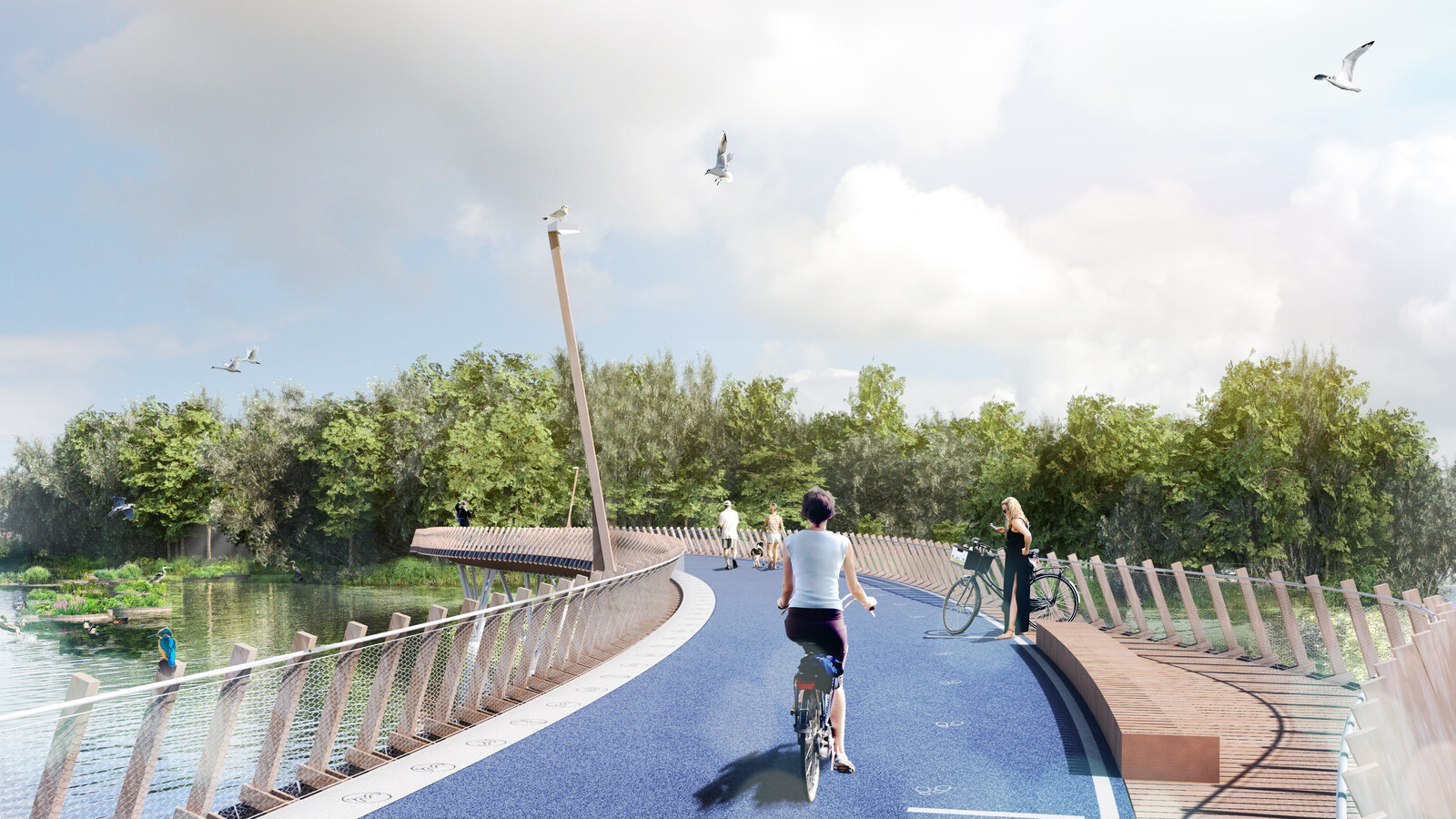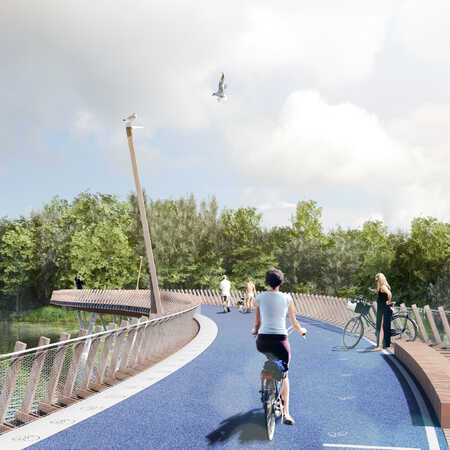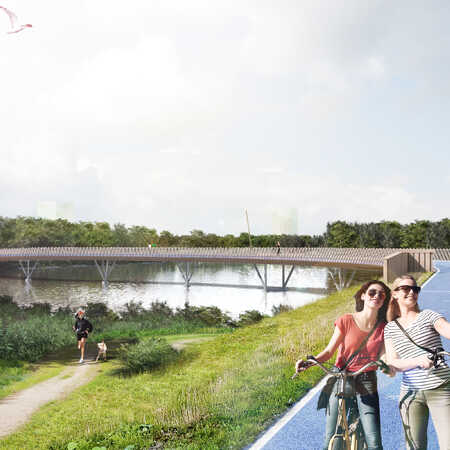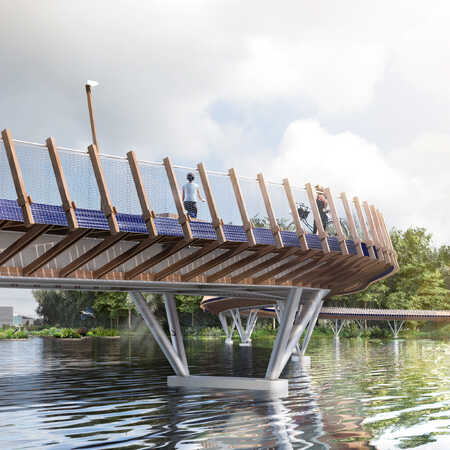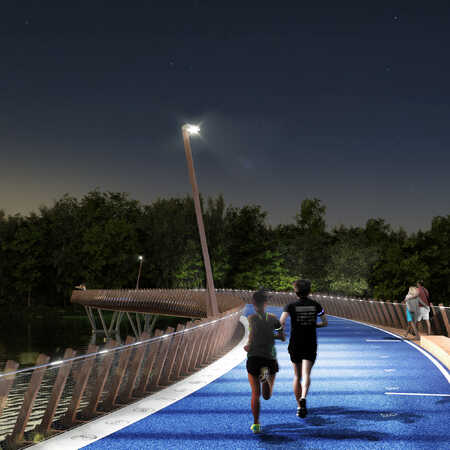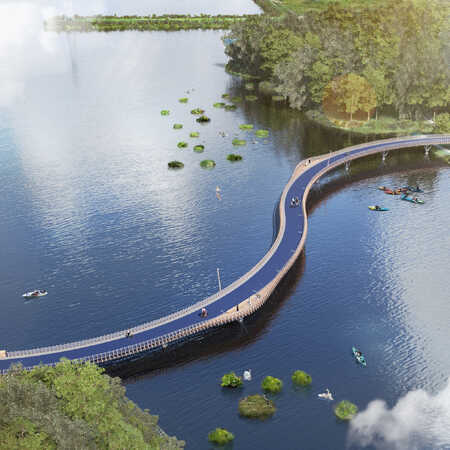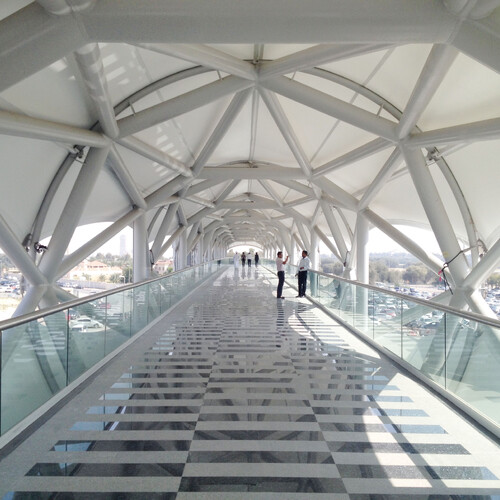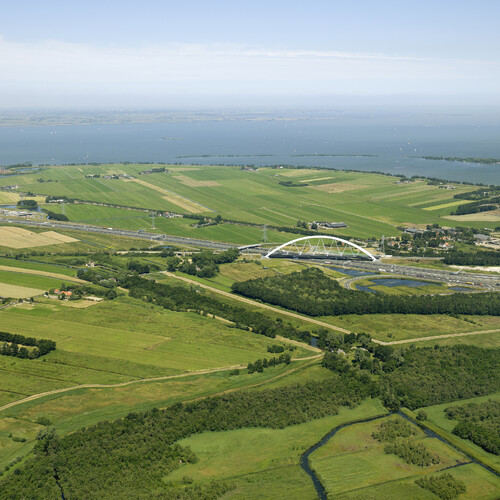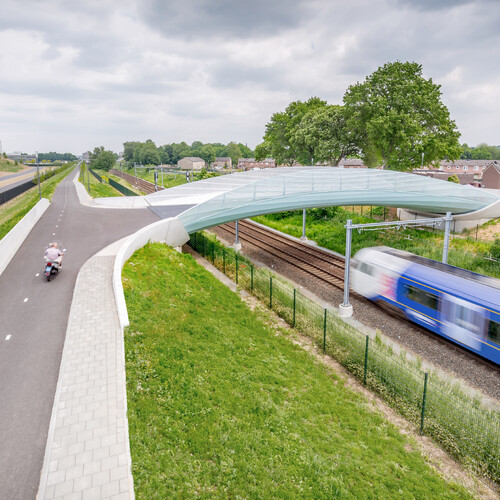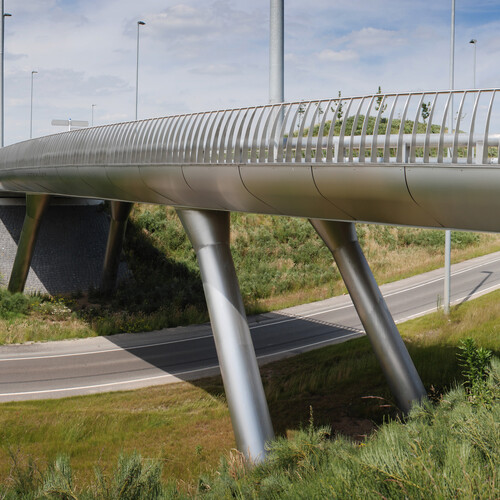Almere, a green city
The Weerwater Bridge spans an offshoot of the city lake, the Weerwater and serves to connect the Lumière Park and the Floriade Island for pedestrians and cyclists. The city has a strong focus on being the location for the Floriade International Horticultural Festival in 2022. The municipality has set themselves the goals to be energy neutral by that time and to have a circular zero waste cycle. The youngest large city in the Netherlands has an ambitious vision of its future as a green city. Besides developing an abundance of green landscape this means supporting the food needs of the city by means of local cultivation and caring for a sustainable energy supply. The aim is to offer a high quality of life to the residents of Almere and challenge them to embrace a healthier and happier lifestyle.
The idea behind the bridge
The design produced by the architects ZJA for the Weerwater Bridge is based on three principles. The first is that the bridge is an organic part of the environment and befits the way plants, animals and people make use of it. The land abutments facilitate swallows to build their nests there. Floating islands alongside the bridge give extra opportunity to waterfowl and underwater life. The shape of the bridge, a serpentine and widening deck, is designed to enhance the experience of crossing the water, with a view of the park alternating with a view of the lake and the city’s skyline.
The second principle is that the bridge itself is built using as much recycled material as possible. That includes making sure that the construction, the use and maintenance of the bridge aims to be energy-neutral. Sustainable and circular construction is in line with Almere’s ambitions as a green city.
The third principle of the design is that the bridge clearly communicates the green ideas based on which it is designed. Walking, cycling or running across it one does not only experience the beauty of the park and the view over the lake, but also picks up a feeling for the ideas of circularity, ecological integration and sustainable building that have been applied here. The green ambitions of Almere can be read from this bridge. It is an exciting example of a future way of building that brings the users closer to the open space, nature and the beauty of the environment. And it is immediately obvious that the way it is built and integrated into the landscape with its additions to give opportunities to plants and animals makes ecological sense.
How is the Weerwater Bridge put together?
Slender columns support the bridge deck that connects the banks of the lake with its elegant swerving shape. The light is allowed to play in between the wooden ribs, making it seem as if the deck is hovering above the water, offering places to linger where it widens. Crossing the bridge brings one closer to the park, the water birds and water plants and offers a sprawling view across the lake of the skyline of the young and vital city in the distance. In many aspects the Weerwater Bridge makes a connection with all that Almere has to offer.
The steel columns are made of recycled steel, taken from demolished buildings from all over the Netherlands. The wooden ribs and the deck consist for 75 % of recycled azobe wood, originating from replaced shore embankments and the outer layer of the land abutments contain recycled basalt. The choice for minimal or no manipulation of the materials brings out the motivation to build with circularity in mind. It is obvious that the columns, the steel profiles and the wood of ribs and deck have been used before. The foundations that remain invisible are fully recycled as well. It is a bridge with a multiple past, offering a host of stories.
To use as little material as possible also leads to adjustments to the land abutments, making the bridge a little shorter. This design does not have to produce any waste: all parts are easily removed and replaced without loss of material or damage.
The side panels of the deck are equipped with solar cells that produce the energy for the subtle evening lighting on the bridge. Subtle lighting goes with the style of this bridge, where functionality, visual experience, circularity and ecology go together.
A new look on constructive design
The Weerwater Bridge is an attempt to develop a new look on constructive design. This design can be seen as an experimental inquiry into a design method that strikes a balance between three dimensions: that of functionality (economic and technical aspects), that of esthetics (visual and cultural aspects) and a third in which sustainability as a fundamental factor in architecture plays a role in all stages and elements of the design process. It is an art to learn to design that way and to consider energy-use, circularity and the relationship with the ecosystem and people from the very beginning. Those who wish to consider sustainability not just an economic concern or a fashionable prop or fad is in for a difficult transition process. There will be new uncertainties: the appearance of the columns of the bridge will be determined by the price and availability of steel to be re-used. The life span of the wooden deck may be shorter than a concrete one, but in terms of emission it might be a huge win. All this leads to new considerations when technical and esthetic choices are to be made.
In all this is an engaging way to explore new building methods, to research and test new materials, to re-think the hierarchy of our priorities. Only experimental research can give insight into how functionality, esthetics and sustainability can best be negotiated at a fundamental level. With its design for the Weerwater Bridge ZJA shows that as far as they are concerned this research is a necessary element of the future of architecture.
Client: The Municipality of Almere
Principal: Heijmans
Timber supplier: Wijma Kampen
Steel supplier: Broeze
Tender: 2018
Project: #1117
